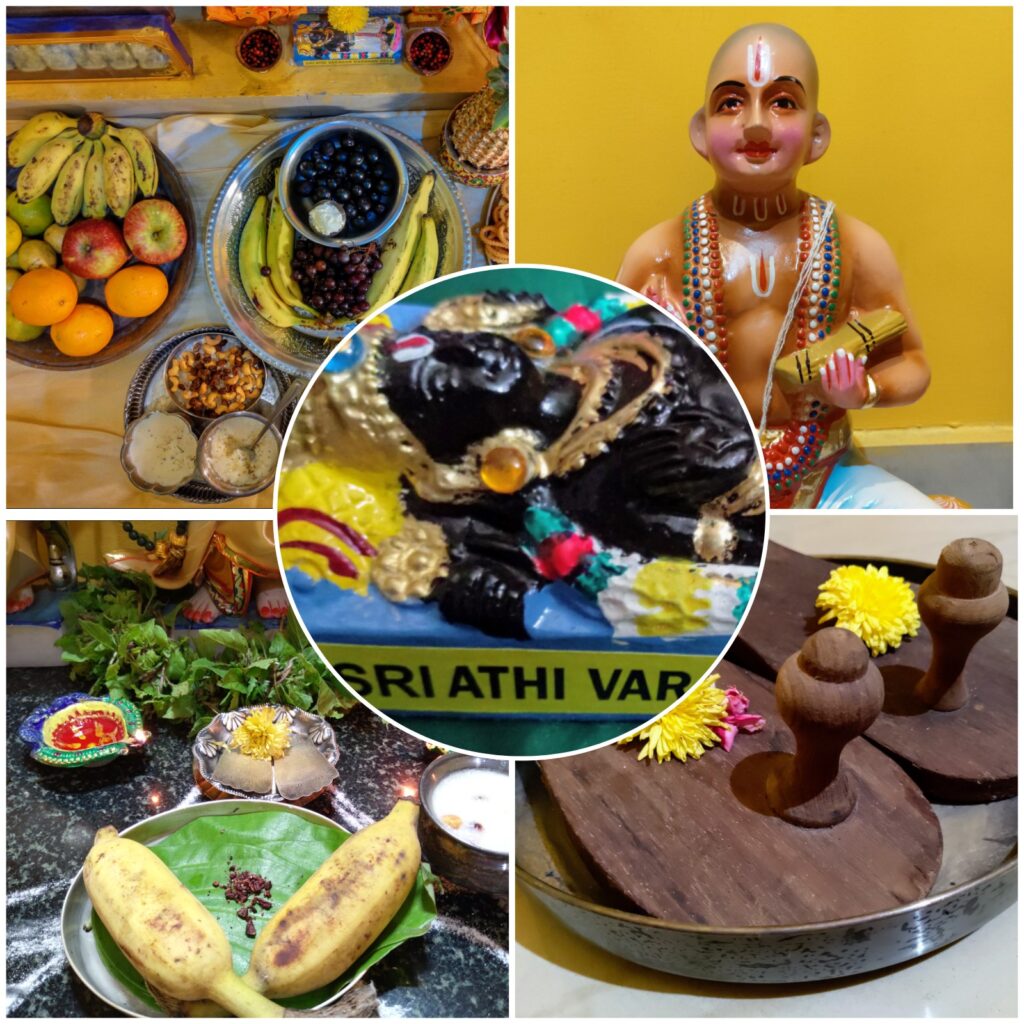Workshop on Vaiṣṇava material culture (in South India)
(8—10 December 2021, virtually held per zoom)
Organisers: Suganya Anandakichenin, Elisa Freschi, Naresh Keerthi, Srilata Raman

(Photo by Suganya Anandakichenin)
Please register (with an email stating your interests and affiliation) by December the 1st at this address: elisa.freschi@utoronto.ca (places are limited, apologies in advance if your request cannot be accommodated)
Program:
| 8.12 (vegetable and edible substances) | 9.12 (ritual emblemes) | 10.12 (new lives of texts) | |
| 8:15—8:30 | welcoming address (Srilata) | welcoming address (N+S) | welcoming address (E) |
| 8:30—9:00 | practical demo (Srinivasa Rajan Swami: “A look at the Araiyar’s outfit”) | practical demo (M.A.V. Madhusudanan Svāmī on śaṭharī) | practical demo (Thillaisthanam Parthasarathy: “From traditional to contemporary: Srivaisnava wedding cards”) |
| 9:00—9:45 | Srilata Raman “From Pāyasam to Puḷiyōtarai – Food in Śrīvaiṣṇava Domestic Culture” | Borayin Larios (The Divine Thief and the Solidification of Dairy: Kṛṣṇa’s Butterball in Mahabalipuram) | Ilanit Loewy Shacham “The commentary in the hand of the ācārya” |
| 9:45—10:30 | Andrea Gutiérrez “Feeding Aranganathar “Feeding Devotees: Recovering Recipes from Medieval Temple Inscriptions at Srirangam” | Suganya Anandakichenin “The worship of the Ācārya’s pādukās among the Śrīvaiṣṇavas” | Harshita Mruthinti Kamath “Temple Poems on Copperplates: The Material Life of Annamayya’s Telugu Padams” |
| coffee break | |||
| 10:45—11:30 | Naresh Keerthi “Goddess in a Flowerpot — Towards a Theobotanical Account of Tulasī” | Ute Huesken “A god’s second life: Āti Atti Varatar Vaipavam” | Jonathan Peterson (“Branding the Sensuous Body: Taptamudrā and Material Practice in Early Modern South Asia”) |
| 11:30—12:15 | Vasudha Narayanan “Food for thought, Food for Body and Soul: Srivaishnava Temple Prasada” | Marzenna Czerniak-Drożdżowicz “Material body of god’s representations – how to establish it and how to mend it” | final round table |
| lunch break | |||
| 12:30—13:15 | James Mc Hugh “Preliminary Thoughts on Betel (pān) in Hindu Vaiṣṇava Worship” | practical demo (T.A.Chari and Malini Chari: “Gifting Rāmānuja’s vigraha”) |
Discussants: Anusha Rao, Jesse Pruitt, Mirela Stosic, Manasicha Akepiyapornchai, Sathvik Rayala, Janani Mandayam Comar, Prathik Murali, Giulia Buriola
